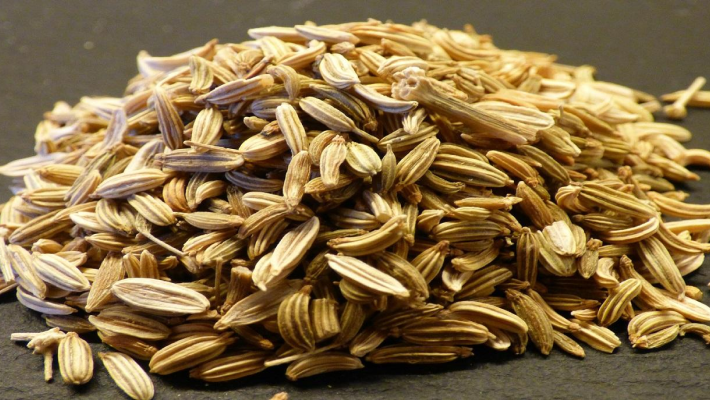Herbs Seeds

- €4,95
Premium Fennel Seeds for Southern European FlavorDiscover the unique taste of fennel seeds from the Foeniculum vulgare Zefa Fino variety, known for its distinctive anise-flavored bulbs. This variety of bulb fennel seeds offers a slightly...
- €4,95
Premium Fine-Leaved Basil Seeds for Culinary HerbsDiscover the vibrant aroma and strong flavor of fine-leaved basil seeds, perfect for enhancing your indoor herb gardening or outdoor herb cultivation. This variety of Ocimum basilicum produces aromatic...
- €4,95
Highly Aromatic Flat-Leaf Parsley Seeds for Gardens Discover the versatility of flat-leaf parsley seeds, ideal for both greenhouse herb cultivation and outdoor herb gardening. This aromatic parsley variety, known botanically as Petroselinum crispum, features broad,...
- €11,95
Fast Germinating Garden Cress Seeds Bulk PackDiscover the vibrant flavor and quick growth of garden cress seeds from the common variety of Lepidium sativum. Belonging to the mustard family plant group, these edible herb seeds...
- €4,95
Spicy Aromatic Garden Cress Seeds for SaladsDiscover the vibrant flavor of garden cress seeds (Lepidium sativum L.), a fast-growing herb that adds a spicy-aromatic touch to salads and dishes. This easy to grow garden cress...
- €4,95
Vigorous Aromatic Gigante d'Italia Parsley HerbGigante d'Italia parsley, known botanically as Petroselinum crispum, is a distinguished Italian heirloom parsley variety cherished for its large, smooth leaves and intense aroma. This smooth-leaf parsley stands out among...
- €4,95
Versatile Italian Classic Basil for Culinary UseDiscover the rich aroma and flavor of Italian Classic Basil, an essential herb for every kitchen garden. This Ocimum basilicum variety, known as Italian Classic Genovese basil, is prized...
- €4,95
Large-Leafed Basil Seeds for Culinary HerbsDiscover the versatility of large-leafed basil seeds, perfect for cultivating aromatic herb plants that enhance a variety of dishes. This Ocimum basilicum variety produces large basil leaves known for their...
- €4,95
Fresh Lemon Basil Microgreens with Citrus FlavorDiscover the vibrant taste of Lemon Basil Microgreens (Ocimum basilicum var. citriodorum), prized for their sweet citrus flavor and delicate aroma. These green microgreens offer a refreshing twist with...
- €4,95
Flavorful Lemon Basil Seeds for Culinary Herb GardensDiscover the vibrant taste of lemon basil seeds, ideal for enriching your herb garden with a unique citrus aroma. This variety, Ocimum basilicum var. citriodorum, produces bright green...
- €4,95
Premium Lemongrass Seeds for Indoor Herb GardeningDiscover the vibrant flavor of lemongrass seeds, ideal for indoor herb gardening and potted herb plants. The tropical herb Cymbopogon flexuosus, commonly known as lemongrass, is prized for its...
- €4,95
Large Leaf Basil Perfect for Culinary Herb GardeningDiscover the vibrant aroma and flavor of Lettuce Leaf Basil, a variety of Ocimum basilicum L. prized for its large, fragrant green leaves. This sweet basil cultivar stands...
- €4,95
Discover the Benefits of Lovage Seeds for CookingLovage seeds from Levisticum officinalis offer a versatile addition to any herb garden, especially for those seeking a robust, celery-flavored herb. This perennial culinary herb grows up to...
- €4,95
Lovage Seeds for Culinary Seasoning and Herb GardeningDiscover the versatile lovage seeds of Levisticum officinalis, a perennial herb renowned for its intense flavor that resembles Maggi seasoning. These lovage herb seeds are perfect for enhancing...
- €4,95
Premium Marjoram Seeds for Culinary Herb GardensDiscover the vibrant flavor and aroma of marjoram seeds, perfect for enriching any spice garden. This aromatic herb, known botanically as Majorana hortensis, is cherished for its mild, spicy...
- €4,95
Premium Marjoram Seeds for Mediterranean Herb GardensDiscover the vibrant aroma and distinctive flavor of marjoram seeds, perfect for adding a Mediterranean touch to your herb garden. Known botanically as Majorana hortensis, this aromatic herb thrives...
- €4,95
Versatile Culinary Herbs from Marjoram SeedsDiscover the rich flavor of marjoram seeds from Origanum vulgare, a cherished Mediterranean herb prized for its aromatic and mildly spicy taste. These herbal seeds are ideal for adding depth...
- €4,95
Colorful Mixed Basil Seeds for PotsDiscover the vibrant flavors of mixed basil seeds, featuring a unique blend of lemon basil seeds, cinnamon basil variety, Dark Opal basil, and classic sweet basil. This flavorful basil mix...
- €4,95
Versatile Mixed Herbs Seeds for Fresh Culinary UseDiscover the vibrant flavors of mixed herbs seeds designed for a thriving homegrown cooking herbs collection. This thoughtfully curated Mixture Of Herbs combines classic favorites like basil, parsley,...
- €4,95
Distinctive Monarda Lemon Bergamot Seeds for Gardens Discover the charm of Monarda Lemon Bergamot seeds, perfect for adding a lemon-scented herb to your herb garden or flower beds. This annual variety, Monarda citriodora, features attractive...





































































